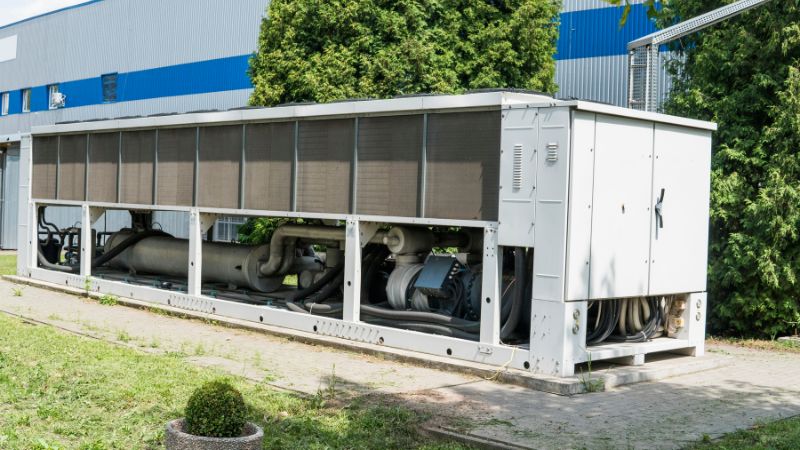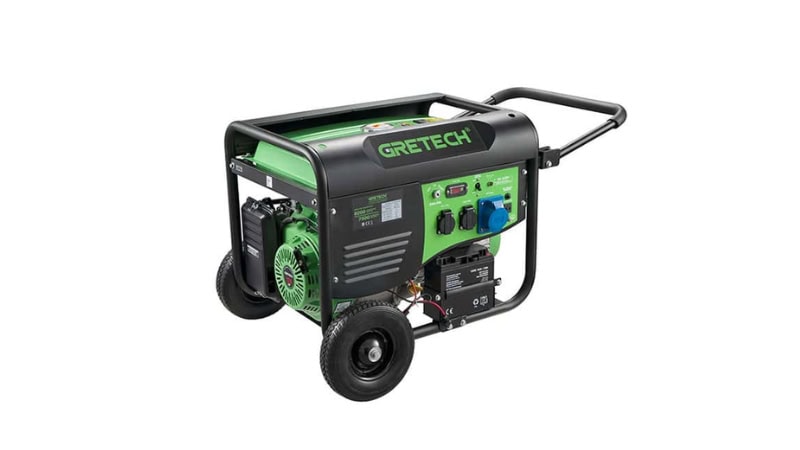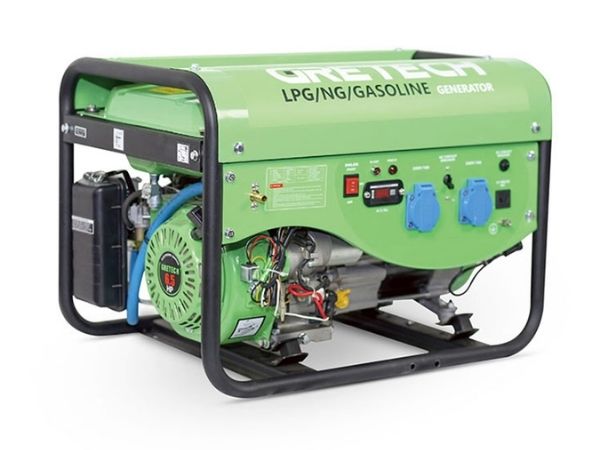Have you ever considered a natural gas generator for your home power solution?Have you ever wondered how they work, what their pros and cons are, and where they’re best used?

By reading this article, you’ll gain a deeper understanding of natural gas generators—including how to choose the right one and even how to convert a portable gasoline generator to run on natural gas yourself.
What is a Natural Gas Generator?
A natural gas generator is a type of generator that uses natural gas to create electricity, usually as backup generators for homes or businesses. These generators use a special engine that burns natural gas, such as methane or propane, to turn mechanical energy into electrical power. This can keep your lights, appliances, and important devices running when the regular generator power goes out.
Most natural gas generators use fuel injection to deliver the gas for combustion. The process and setup are similar to diesel generators, but the fuel type and ignition method set them apart. Natural gas generators are valued for their reliability and cleaner emissions compared to traditional diesel options.
How Does a Natural Gas Generator Work?
These generators function by burning natural gas in an internal combustion engine, similar to an automobile engine but optimized for extended, continuous operation.
The engine uses a spark plug and a spark ignition system to ignite the gas inside the combustion chamber. When the fuel burns, it creates hot gases that push a piston. The piston moves up and down, turning a crankshaft. This turning action powers an alternator, which then produces electricity.
Key Parts of a Natural Gas Generator:
| Part | Function |
|---|---|
| Engine | Burns natural gas and provides power |
| Alternator | Turns motion into electricity |
| Fuel System | Delivers natural gas to the engine |
| Cooling System | Keeps the engine from getting too hot |
| Control Panel | Lets you manage and monitor the generator |
With a transfer switch, the generator can automatically start when it detects a power outage. This helps power your home or business during emergencies without manual work.
Pros & Cons of a Natural Gas Generator
Natural gas generators use natural gas as their primary fuel source to produce electricity. Like any device, they have both benefits and drawbacks.

Pros:
- Clean Burning: Natural gas is one of the cleanest fossil fuels. You will notice less odor and fewer harmful emissions compared to diesel or gasoline.
- Continuous Fuel Supply: These generators often connect directly to gas pipelines, so you do not have to refuel them as often.
- Cost-Effective: Running on natural gas usually costs less than using gasoline or diesel.
- Quiet Operation: Most natural gas generators run more quietly, which may be helpful in neighborhoods or near homes.
Cons:
- High Upfront Cost: Natural gas generators can be expensive to buy and install. You might also need to make changes to your home.
- Requires Professional Installation: Most models need a licensed technician to set up the generator and safely connect it to the gas line.
- Dependent on Gas Supply: If the natural gas supply gets cut off during emergencies, your generator will not work.
- Less Mobile: These generators are usually installed in one location and not easy to move.
How to Choose a Natural Gas Generator?

When picking a natural gas generator for your home or business, consider your power needs first. List which appliances or devices you want to run during an outage. Check the wattage each item uses and add them up to find the total required output.
Generator Size Table
| Appliance | Average Wattage |
|---|---|
| Refrigerator | 600-800 W |
| Central AC | 2000-4000 W |
| Sump Pump | 750-1000 W |
| Lights (Total) | 300-600 W |
| Wi-Fi Router | 5-15 W |
Look at the generator’s rated running watts and make sure it matches your needs. Choose a model with some extra capacity to avoid overloading.
Think about where you will install the generator. Natural gas generators need proper ventilation and must be set up outdoors. Make sure the location follows local codes and keeps the generator away from windows and doors.
Consider how easily the generator connects to your natural gas line. Check if you need a professional to install a transfer switch or connect the unit to your existing gas supply.
Other features to look for include:
- Automatic start, so the generator turns on when the power goes out
- Noise level, as quieter units can be less disruptive
- Maintenance alerts or simple controls for easier use
If you need backup for critical medical devices or sensitive electronics, choose a generator with stable voltage and high-quality power output.
Price, warranty, and service options also matter. Compare brands and models based on reviews, support, and included features to find the best fit for your situation.
How to Convert a Portable Generator to Run on Gas
Want to convert your generator to natural gas fuel? Follow these basic steps.
Step 1: Gather Necessary Parts
You’ll need a natural gas/propane conversion kit compatible with your generator’s engine. Common components include:
- Carburetor adapter plate (to mix gas with air)
- Demand regulator (adjusts gas pressure)
- Gas solenoid valve (safety shut-off)
- Low-pressure gas hose & fittings
- Air/fuel mixture adjustment screws (if not included in the kit)
Step 2: Shut Off Fuel & Prepare the Generator
- Disconnect the spark plug to prevent accidental starts.
- Drain the gasoline from the tank and carburetor.
- Remove the air filter and carburetor.
Step 3: Install the Conversion Kit
- Mount the adapter plate between the carburetor and engine intake.
- Connect the demand regulator to the adapter plate.
- Install the solenoid valve (if included) for safety shut-off.
- Run the gas hose from the regulator to your natural gas supply (or propane tank).
- Use Teflon tape on threaded fittings to prevent leaks.
Step 4: Adjust the Air-Fuel Mixture
- Natural gas requires more air than gasoline, so the carburetor may need adjustment. Some kits include an adjustable screw to fine-tune the mixture.
Step 5: Test for Leaks & Start the Generator
- Apply a soapy water solution to all gas connections. Bubbles indicate a leak—tighten fittings as needed. Reconnect the spark plug and start the generator.
Common Applications of Natural Gas Generators
Natural gas generators remain a popular choice where power continuity and environmental impact matter. They are reliable for both short-term outages and long-term power needs.
Here’s a table showing common applications:
| Application | Key Benefit |
|---|---|
| Homes | Backup power supplies, quiet |
| Hospitals | Power continuity |
| Offices | Cost-effective backup |
| Factories | High kilowatts, reliability |
| Data Centers | Quick start, efficiency |
Frequently Asked Questions
What are the typical applications of a natural gas generator?
You can use natural gas generators as standby generators in homes and businesses. These generators are also found in hospitals, schools, and data centers to prevent downtime during outages. Some people use them as the main source of power in remote locations or during outdoor activities. Businesses might rely on them to support key equipment or servers.
What are the benefits of a portable natural gas generator versus a fixed installation?
A portable natural gas generator lets you move it where it’s needed, making it useful for temporary sites, camping, or emergencies. These units are generally smaller and easier to store when not in use. Fixed installations work best for homes or businesses that want an automatic backup power source.
Is a natural gas generator capable of powering an entire home?
A properly sized natural gas generator can supply enough electricity for most or all of your home’s needs. Whole-house generators are designed for this purpose and connect directly to your home’s electrical panel.
